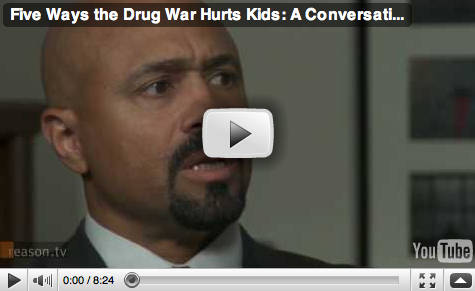Teen Marijuana Use Continues to Rise: Report Consistently Shows Prohibitionâs Failure to Curb Teen Access to Marijuana; More Teens Say Marijuana is Easy To Get (Press Release)

FOR IMMEDIATE RELEASE
DECEMBER 14, 2010
Teen Marijuana Use Continues to Rise
Annual Report Consistently Shows Prohibition’s Failure to Curb Teen Access to Marijuana; More Teens Say Marijuana is Easy To Get
CONTACT: Mike Meno, MPP director of communications: 202-905-2030, 443-927-6400 or [email protected]
WASHINGTON, D.C. – Marijuana use by 8th, 10th and 12th grade students increased in 2010, with more American teenagers now using marijuana than cigarettes for the second year in a row, according to numbers released today by the National Institute of Drug Abuse and the University of Michigan as part of the annual Monitoring the Future survey. In 2010, 21.4 percent of high school seniors used marijuana in the last 30 days, while 19.2 had used cigarettes.
“It’s really no surprise that more American teenagers are using marijuana and continue to say it’s easy to get. Our government has spent decades refusing to regulate marijuana in order to keep it out of the hands of drug dealers who aren’t required to check customer ID and have no qualms about selling marijuana to young people,” said Rob Kampia, executive director of the Marijuana Policy Project. “The continued decline in teen tobacco use is proof that sensible regulations, coupled with honest, and science-based public education can be effective in keeping substances away from young people. It’s time we acknowledge that our current marijuana laws have utterly failed to accomplish one of their primary objectives – to keep marijuana away from young people – and do the right thing by regulating marijuana, bringing its sale under the rule of law, and working to reduce the unfettered access to marijuana our broken laws have given teenagers.”
Since the survey’s inception, overwhelmingly numbers of American teenagers have said marijuana was easy for them to obtain. According to the 2010 numbers, the use of alcohol – which is also regulated and sold by licensed merchants required to check customer ID – continued to decline among high school seniors.
With more than 124,000 members and supporters nationwide, the Marijuana Policy Project is the largest marijuana policy reform organization in the United States. MPP believes that the best way to minimize the harm associated with marijuana is to regulate marijuana in a manner similar to alcohol. For more information, please visit www.mpp.org.
####
